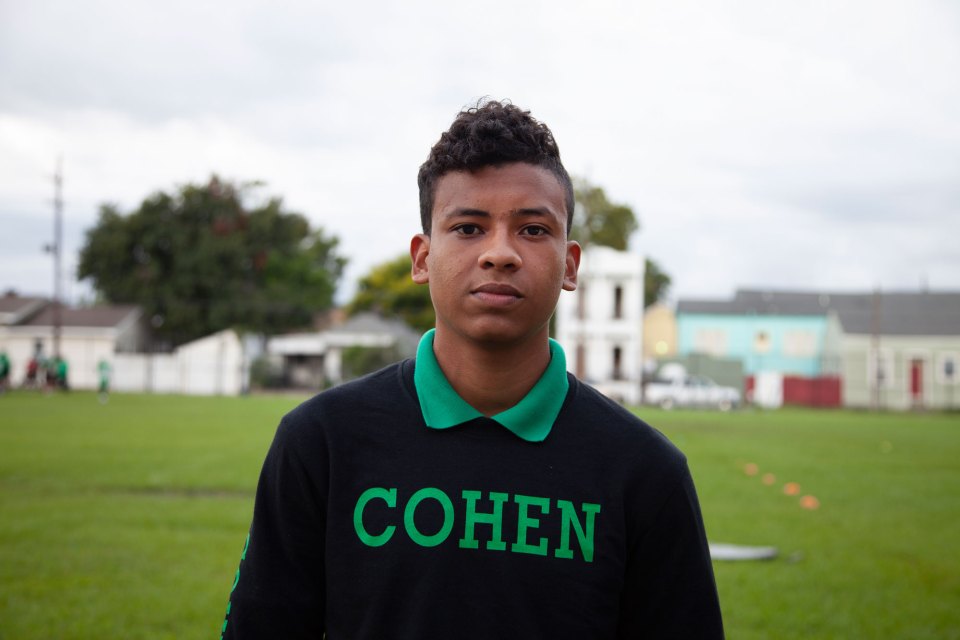
NEW ORLEANS — In Honduras, Carlos Chirinos-Padilla said, it was too dangerous to run. Soccer games were short and confined to the street in front of his house. Drug cartels roamed the neighborhood, he said, sometimes forcibly recruiting his neighbors, sometimes murdering them. Carlos and a group of other boys stole space and time when they could, but the violence left little room for dribbling.

When he fled Honduras for New Orleans two years ago, Carlos, now 16 and a high school junior, hoped for just two things: a quiet place to live and an opportunity to play real soccer on a real team. A high school squad, he thought, would be the best place to start.
Carlos enrolled at Cohen College Prep, a small high school in uptown New Orleans. For nearly 70 years, Cohen had been largely African-American, but Carlos’s arrival coincided with a demographic shift at the school. Five years ago, the school had no Latino students. Teenagers whose first language is Spanish now make up more than a quarter of the 350 students enrolled. Statewide, the number of Hispanic students has tripled over the past decade, from 17,000 in 2008 to 50,000 this year.
“What I saw a lot is these kids were isolated … There’s nothing tying them to the school, nothing bringing them into the community.”
Almost as soon as the new students arrived, teachers said, they started asking to play soccer.
Cohen teachers wanted to create a team. Research shows that sports improve a teenager’s grades and behavior — benefits the teachers believed their new students needed. Many had seen their schooling interrupted by the chaos back home; some had experienced gang violence or human trafficking. But it looked like the teenagers would have to do without the advantages sports participation could bring: The nonprofit that governs Louisiana’s high school sports won’t allow most of the Central American students to play. The Louisiana High School Athletic Association requires all student-athletes to present some proof of age — a birth certificate or official immigration papers — along with a social security number. Though some of the Central American students are in the country legally or have temporary visas, most do not have the required documents.
Frustrated, Cohen teachers and administrators decided this fall to try something different. They started an unsanctioned team.
Someone to play with
The New Orleans public school system is unlike any other in America. All but a few of the 80 public schools operate as charters, which private organizations run using public funds. Students can apply to any institution in the city — no matter where they live.
Few New Orleans high schools employ English Language Learner (ELL) instructors for students new to the language. When the first few Central American students applied to Cohen, the high school drafted its Spanish instructor to teach them. By 2015, the number of Spanish-speakers grew too large to be handled by one teacher, and the school hired specialists in teaching English as a Second Language. Soon after, the number of Central American students at Cohen shot up, even though the majority of New Orleans high schools still had few, if any, Spanish-speaking students.
Carlos, a lanky teen with chestnut skin and a high-fade of well-coiffed curly hair, considered a few schools before choosing Cohen. They were all closer — Cohen is five miles from his shotgun house in the Fairgrounds neighborhood — but none seemed as relaxed as Cohen, he said.
Like the tens of thousands of other children who have arrived from Central America in the last four years, Carlos came alone when he traveled from Olancho, Honduras. His home was one of the most violent states in a country that, until recently, posted the world’s highest homicide rate.
By United States standards, the new home he escaped to is also dangerous: For three decades, Louisiana has had the highest murder rate in the country, and New Orleans is the state’s most violent city. Nationwide, only Baltimore, St. Louis and Detroit have higher murder rates.
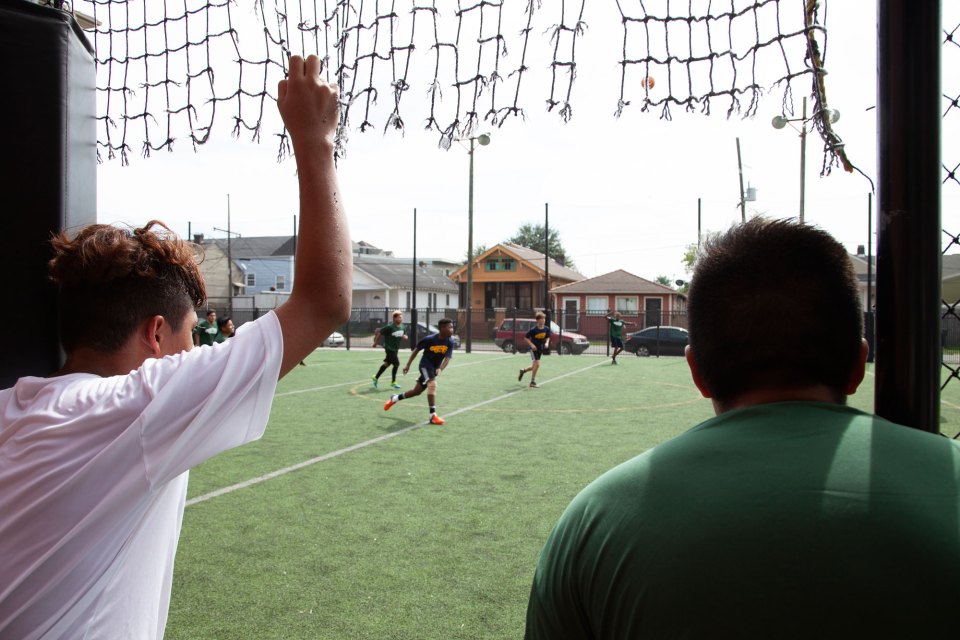
Still, to Carlos, it feels comparatively peaceful here. He liked Cohen, even if teachers assigned more homework than he’d had in Honduras. After class, he retreated home, where he lives with his mother and sister, to a street so quiet he was sure he could spend all evening outside playing soccer. There was just one problem: He didn’t know anyone in the neighborhood.
“I didn’t have anyone to play with,” he said. “Imagine that.”
So last year, Carlos and others asked the new English Language Learner coordinator, Ann Holleman, if they could start a school squad.
Few New Orleans high schools have soccer teams. When charter organizations took over the public schools after Hurricane Katrina, most didn’t even offer football — a much more popular sport in south Louisiana — for another decade, preferring to focus on academics. Initially, teachers encouraged the Central American students to try football and volleyball, the sports the school had slowly added since the storm, but most didn’t know how to play, and found it hard to follow new rules and the shouts of their coaches in English.
“I think it was hard for them to see athletics in school and feel like they couldn’t participate,” Holleman said. “They didn’t understand why we didn’t have soccer. It’s the most popular sport in the world.”
Cohen teachers saw in soccer an opportunity to help the Latino teens see themselves as part of a community, and help turn around often lackluster academics. Many of the Central American students seemed unmoored, sleeping through class, landing in detention and often dropping out early, believing that they’d never meet state benchmarks.
“They had no motivation to make good grades,” said Erik Zavala, an English Language Learner teacher. “A majority of them feel like they won’t have an opportunity to go to college. They’ll just work, they assume. They think it’s not possible for them at all.”
Related: A Spanish-English high school proves learning in two languages can boost graduation rates
An incentive, teachers thought, might help. Holleman wrote to the Louisiana High School Athletic Association and asked to create a sanctioned team. Holleman said she was surprised to learn that the nonprofit requires students to submit a social security number and other documents some Central American students who arrived as unaccompanied minors might not have.
The number of Hispanic students in Louisiana has tripled over the past decade, from 17,000 in 2008 to 50,000 this year.
“We were told, in no uncertain terms, that it would be almost impossible to have soccer because none of our kids would qualify, which was making broad assumptions about a diverse group of students,” Holleman said.
Since 1982, when the U.S. Supreme Court, in Plyler v. Doe, ordered the Tyler, Texas, school district to allow undocumented students to enroll, federal law has required public schools to educate all students, no matter their immigration status.
But high school athletics associations each have their own rules. Louisiana’s is one of the most restrictive. Florida requires immigrant students to present official U.S. Customs forms, and Mississippi only allows students who aren’t U.S. citizens to play if they are official foreign exchange students. Those policies could violate Plyler, some education advocates say, or create school climates in which some students feel unwelcome.
“From an educational perspective, no possible good is served by creating this kind of caste system in schools,” said Bob Farrace, a spokesman for the National Association of Secondary School Principals. “Participation in sports and activities builds a stronger connection to the school, leading to higher achievement and a positive school climate. Denying undocumented students the right to participate in activities contradicts everything we know about the crucial task of building a school culture where every student feels known and valued.”
Louisiana’s eligibility director did not respond to multiple requests for comment, but officials in other states say strict eligibility rules help prevent cheating in sports susceptible to loopholes. Birth certificates ensure that the student-athletes are teenagers — and not 20-something ringers. “Proof of bona fide residence,” which several states require, along with strict transfer policies, prevents school officials from recruiting outside their attendance zones.
Few states have explicit rules concerning undocumented student-athletes, but several allow students to play, whether they’re U.S. citizens or not. In some, including South Dakota, Washington and Georgia, students who are eligible for school are eligible for sports, provided their grades are good enough.
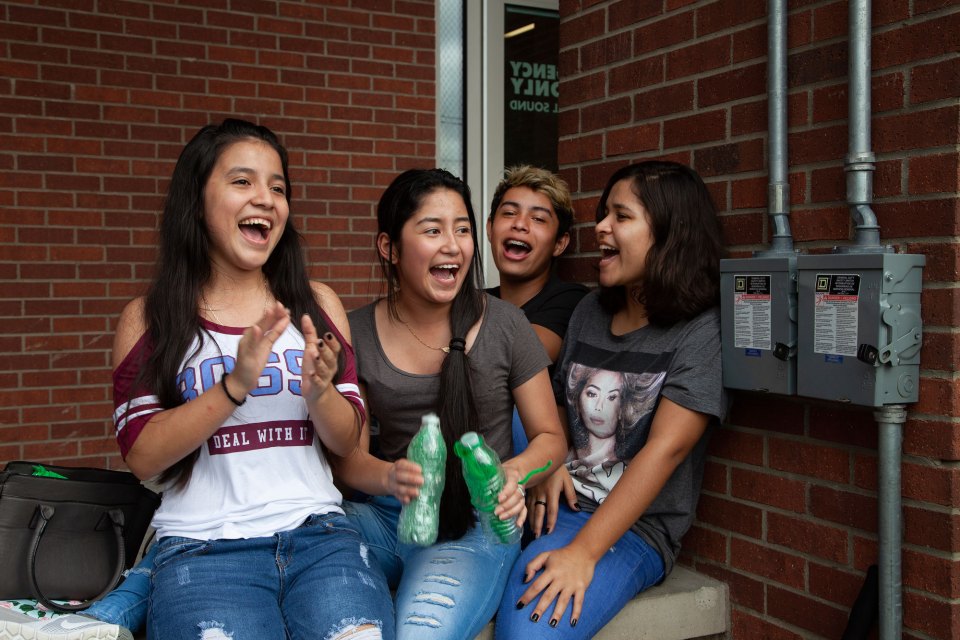
“In terms of undocumented or refugee children, we would treat them the same as any other child,” said Dan Swartos, the executive director of the South Dakota High School Activities Association. “They’d be eligible at the first school they enroll at following the move to the community.”
Others states allow students arriving from other countries to play after a yearlong waiting period; they can request hardship waivers to compete sooner.
Related: As more Latinos go to college, schools vie to become Hispanic-Serving Institutions
Cohen teachers wanted to appeal the Athletic Association decision, but said some school officials worried a soccer program might attract even more English Language Learner students — and cause Cohen to slide in state academic rankings.
The Louisiana Department of Education issues these rankings based, in part, on how well students perform on state tests. When the charter management organization New Orleans College Prep took over in 2012, it inherited a troubled school. Just four years earlier, National Geographic had deemed Cohen “America’s Toughest High School,” home to gang and drug violence. Cohens’ leaders had worked hard to build up the school’s reputation and student achievement, raising the school’s performance score from an F in 2012 to a B in 2016, a jump that prompted a visit from then-Secretary of Education John B. King, Jr., who served under President Barack Obama.
But Cohen fell to a C last year, a drop some alumni say led to declines in the school’s enrollment — and consequently its budget — this year. College Prep cited these budget troubles in September when it laid off some Cohen social workers and college counselors. If a school’s ranking drops too low, as happened at another College Prep high school last year, the state can revoke the charter or shutter the school entirely. The school was not ready to add soccer.
Resigned, a few Central American students tried volleyball. Carlos just went home after school and slept most of his afternoons away.
A real team
When classes resumed this fall, students again asked Holleman about starting a team. She decided to contact the owner of an adult league. Few teenagers played in Crescent City Soccer, but the company’s president, P.J. Lynch, had helped create a club team for an alternative high school, ReNEW Accelerated High School, the year before. Most of the students at ReNEW were either over the age limit or academically unqualified to play state-sanctioned sports, but they still needed an outlet, Lynch said. ReNEW leaders credited the club team with improving players’ grades and attendance.
Holleman asked Lynch if he could create something similar for Cohen. Lynch liked the idea, but, he said, the Cohen students would need more opponents of the same age — so he approached other New Orleans high schools, both public and private, none of which had a sanctioned team. Most had at least a handful of kids from Central America.
“What I saw a lot is these kids were isolated,” Lynch said. “They don’t speak English as well. They’re not going to basketball games or football games. There’s nothing tying them to the school, nothing bringing them into the community.”
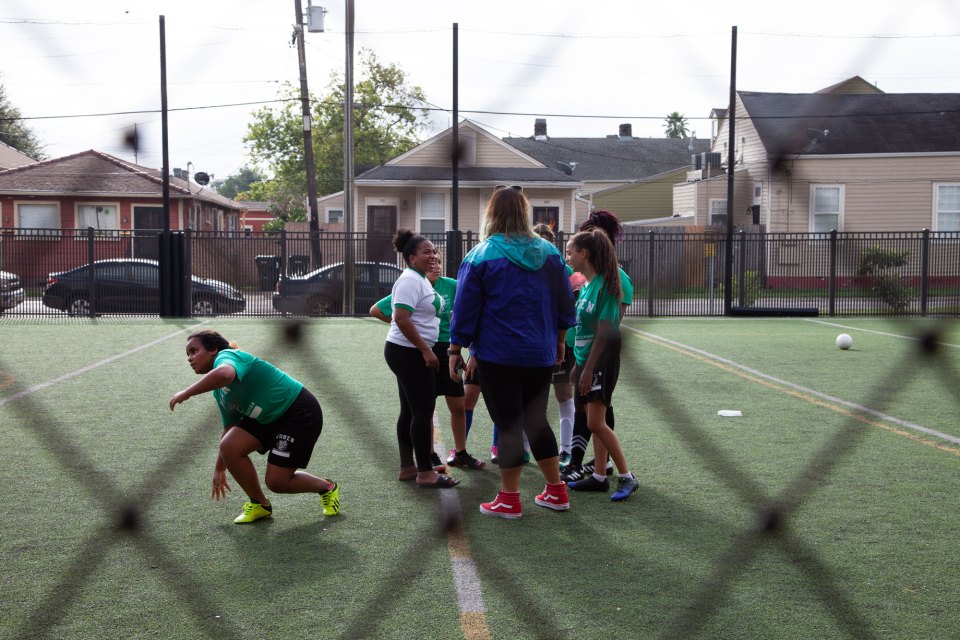
Lynch persuaded nine schools, including some private parochial institutions, to join. Although there were 3,814 Hispanic students enrolled in schools in Orleans Parish in October 2017, according to the state, most schools didn’t have enough players to field a full 11-player team, so he created a six-on-six league, a modified club version played on a smaller field with fewer set positions and formations. Few of the schools created female teams, so Lynch found adult competitors willing to play Cohen’s girls. His business is for-profit, but he held fundraisers to help subsidize the cost to rent a field every Saturday. The schools each chipped in $750 to pay for referees and uniforms.
Related: City that loved and lost high school football finally gets it back
At Cohen, special education teacher Katie Lucky-Heard agreed to coach the girls, and Zavala, a 23-year-old who’d come to New Orleans with Teach for America, said he’d help the boys. Neither had coached before, but they possessed a skill few Cohen teachers did: They both spoke Spanish.
School leaders announced tryouts in August — with a caveat. To join the team, a student had to stay for tutoring and couldn’t land in detention more than a handful of times. After the school secretary finished announcing the rules over the intercom — in English and in Spanish — one girl stood up in class.
“I’m going to be on that team,” Shayna Muñez said. The teacher told Shayna her grades weren’t good enough, but the sophomore announced she’d do anything to get up to the 2.0 cutoff.
“I am going to be on that team,” she told the class.
Half the Central American kids wanted to be on the team. One boy, who works overnight from 10 p.m. to 6 a.m., showed up at tryouts, and the coach worried. Teachers already complained that the student — who arrived at school every morning by 7:30 a.m. — slept through class. If he joined the team, he might be even more exhausted. But the boy begged.
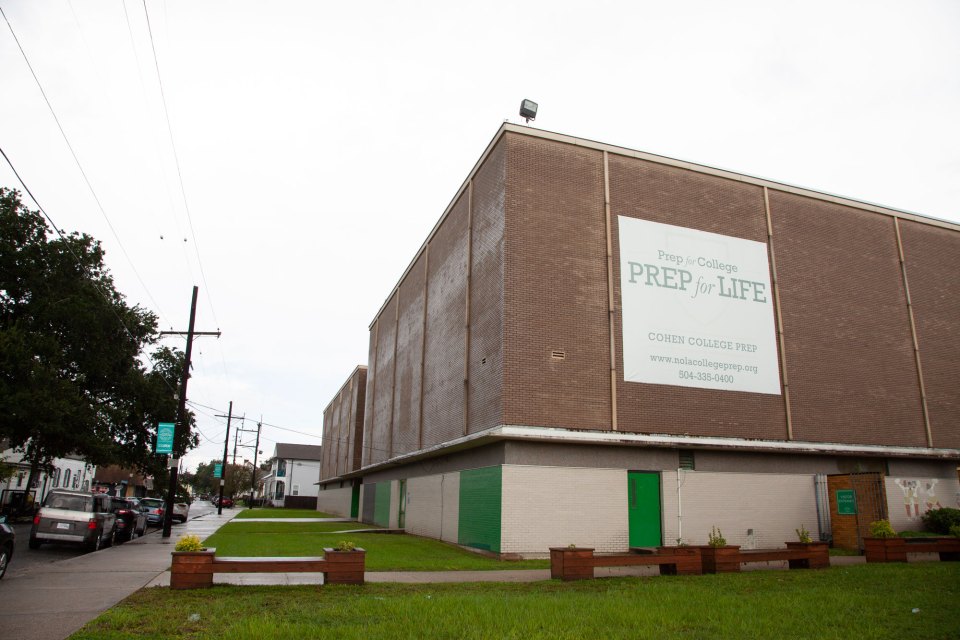
“Please, mister,” he said. “It’s my passion, the only thing good.”
That boy, who asked to remain anonymous to protect his privacy, joined Carlos and a few dozen other kids to stay after school for the first practice. The new athletic director brought a box filled with green and white Crescent City T-shirts. Paired with the school-issued P.E. shorts, he explained, they had a uniform.
Carlos pulled a white T-shirt over his skinny frame, then smiled.
“It was a feeling único,” he said. Like nothing he’d felt before.
Within a week, Zavala said, his students seemed transformed. Because the soccer players stayed after school for tutoring, other Central American kids did, too. Soon, everyone’s grades improved, Zavala said.
Shayna did pull her grade point average up to a 2.63, but she skipped practice once, and the coach took her off the team’s text-messaging thread — a punishment that worked far better than several rounds of detention ever had for the girl. That thread had become a lifeline for girls whose conversations started with soccer plays and evolved into more personal talks about boys and family struggles. The coach added Shayna back to the thread, and the girl hasn’t skipped practice or tutoring since.
Related: These schools are opening their arms to special education students. Can they afford it?
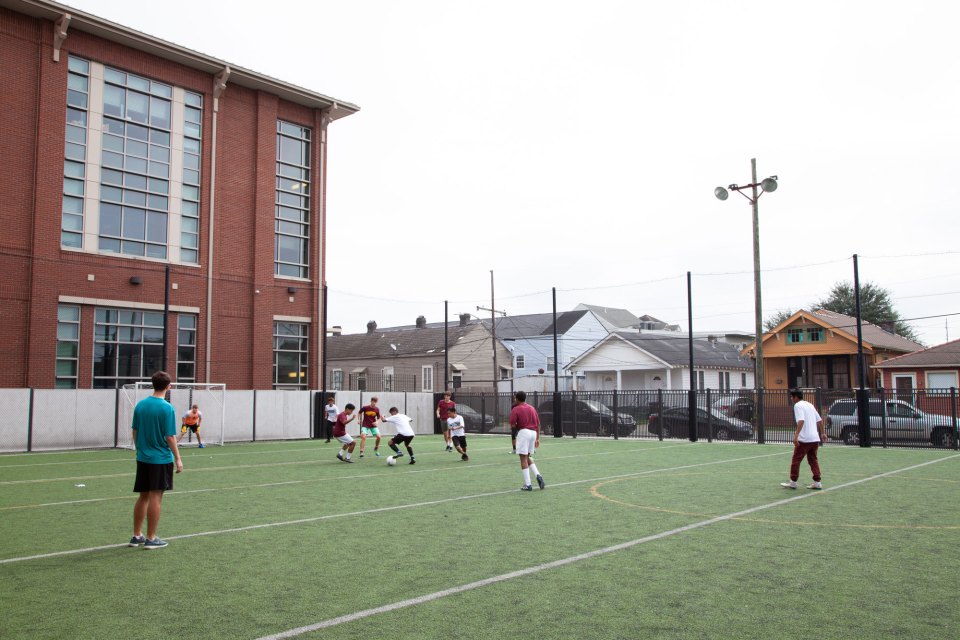
In late September, the two boys’ squads ran drills after school on the field they share with the football team, almost all of whose players are African-American. Around 5 p.m., the football team’s kicker, an African-American student who didn’t speak Spanish, sprinted over. His squad had lost its last three games, and he was lagging, he thought, playing both offense and defense.
“I wouldn’t mind some help,” Andrew Green told the soccer coaches. “Maybe an upgrade at kicker.”
He pointed to Carlos, who was juggling the soccer ball between his head and his knees.
“Let me see you kick,” Andrew said.
Andrew tossed Carlos the football, then mimed punting. Carlos took a deep breath, kicked, and the football sailed long and low. He scrunched up his face in embarrassment, but a few football players clapped. One threw the ball back, and Andrew urged Carlos to try again. Andrew lingered a while, watching as Carlos and other boys tried to swing their legs to get enough lift. With each kick, the ball flew longer and higher.
“That’s a field goal,” a football player called as the ball soared downfield.
“Any time y’all want to join us,” Andrew said, slapping hands with Carlos, “we’re ready.”
Homecoming
Both Spanish- and English-speaking students showed up in late September to cheer on Cohen during its homecoming soccer matches. Teachers set up a buffet of croissants, chips and salsa. Students shook noisemakers they’d fashioned out of water bottles and small rocks.
“I think it was hard for them to see athletics in school and feel like they couldn’t participate. They didn’t understand why we didn’t have soccer. It’s the most popular sport in the world.”
Carlos was recovering from the flu, but he warmed up on the pitch anyway. Lynch could only schedule seven regular games, plus a two-day championship tournament in mid-October, and the homecoming game was one of the team’s final matches of the year. The Louisiana Athletics Association prohibits club teams from competing during the sanctioned soccer season, which begins at the end of October. Crescent City would stop hosting matches until February, when the state league crowns a champion.
The girls played first that morning, a grueling battle against an adult team.
“Tú puedes,” their coach, Lucky-Heard, called over and over again from the sideline. You can do it.
Several dozen spectators spent hours watching the games, though the elementary school pitch Crescent City rents does not have bleachers. They sat on steps or stood along the mesh fence, some carrying umbrellas to block the New Orleans sun. No one in Carlos’s family had ever seen him play. His fans were teachers, adults who spent their day off sweating on the sidelines just to cheer for him.
After the girls lost, Carlos’s team played against a team from De La Salle High School. The private Catholic school fields a team during the regular season, but some students joined Crescent City to get in shape before facing statewide competition.*
Carlos and his teammates passed and dribbled swiftly down the pitch. When the opposing team stole the ball, their coach, a parent volunteer named Marie Bookman, shouted for her team to try passing the ball, like the Cohen team, but Carlos snaked through their formation, stole it back and passed to a teammate, who kicked it in.
“Nothing we can do to defend that,” Bookman said, to no one in particular. “They’re getting to the goal quick and good.”
Cohen defeated De La Salle, 12-2, and a team from KIPP Renaissance High School arrived to play the second match at 11 a.m. KIPP’s team was small — only nine players, compared to Cohen’s few dozen — but diverse. A few were Latino students, one was Vietnamese, and the others were African-Americans just trying soccer for the first time. Cohen won 9-1.
Carlos danced on the sidelines, but paused to remind himself that winning didn’t really matter. Eventually, his team would lose, he said, and he would still love playing, even in defeat.
Winning was a temporary triumph. Though his team would go on to win the championship in late October, what Carlos really cherished, he said, was the space, the freedom to run.
This story about undocumented students was produced by The Hechinger Report, a nonprofit, independent news organization focused on inequality and innovation in education. Sign up for Hechinger’s newsletter.
*Clarification: This story has been updated to reflect that De Salle also fields an official soccer team during the regular season, and that the off-season coach is a parent volunteer.


